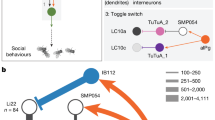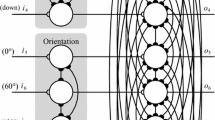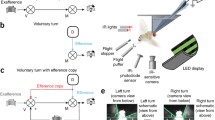Abstract.
Due to the limited computational capacity of visual systems and the limited capacity to perform several mental operations at once, animals only select a small proportion of the stimuli available at any one time. It remains to be clarified how this process is related to the spatio-temporal dynamics of cell assemblies in the brain. By employing the flight simulator, selective visual attention behavior is studied in Drosophila. It has been found that for the visual objects presented, the tethered fruitflies display various attention patterns. Specifically, the learning memory mutants dunce and amnesiac possess attention patterns totally different from that of the wild-type fly. To explain these results from the viewpoint of dynamic cell assemblies, a neural network has been developed in which a possible link between the activity of cell assemblies, encoding of sensory information, and selective attention in Drosophila is proposed.
Similar content being viewed by others
Author information
Authors and Affiliations
Additional information
Received: 3 November 1998 / Accepted in revised form: 1 July 1999
Rights and permissions
About this article
Cite this article
Wu, Z., Gong, Z., Feng, C. et al. An emergent mechanism of selective visual attention in Drosophila . Biol Cybern 82, 61–68 (2000). https://doi.org/10.1007/s004220050006
Issue Date:
DOI: https://doi.org/10.1007/s004220050006




